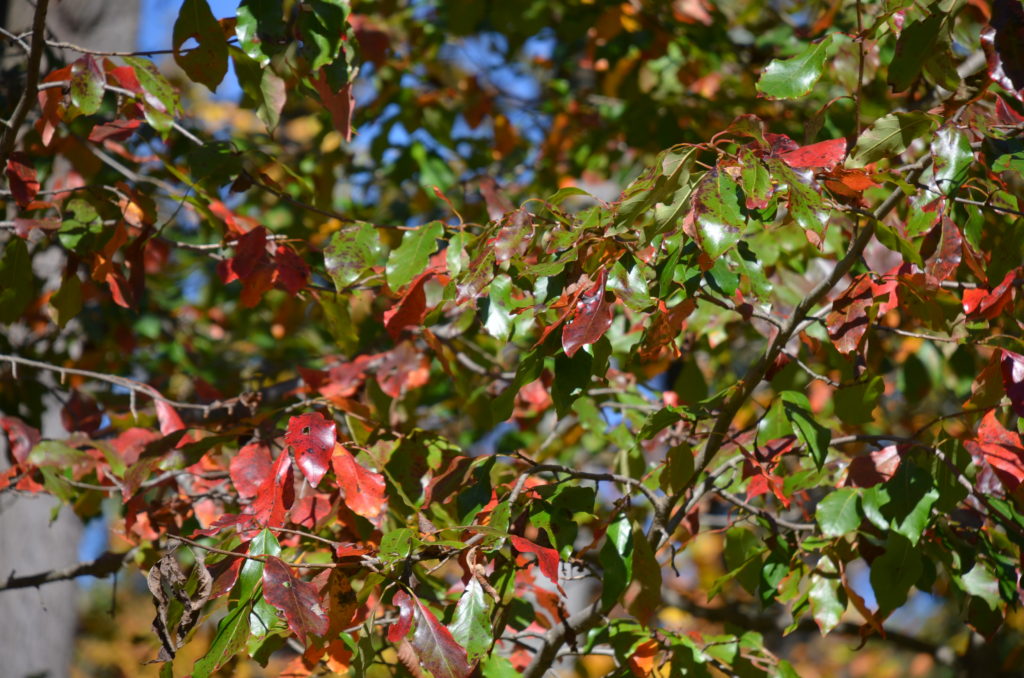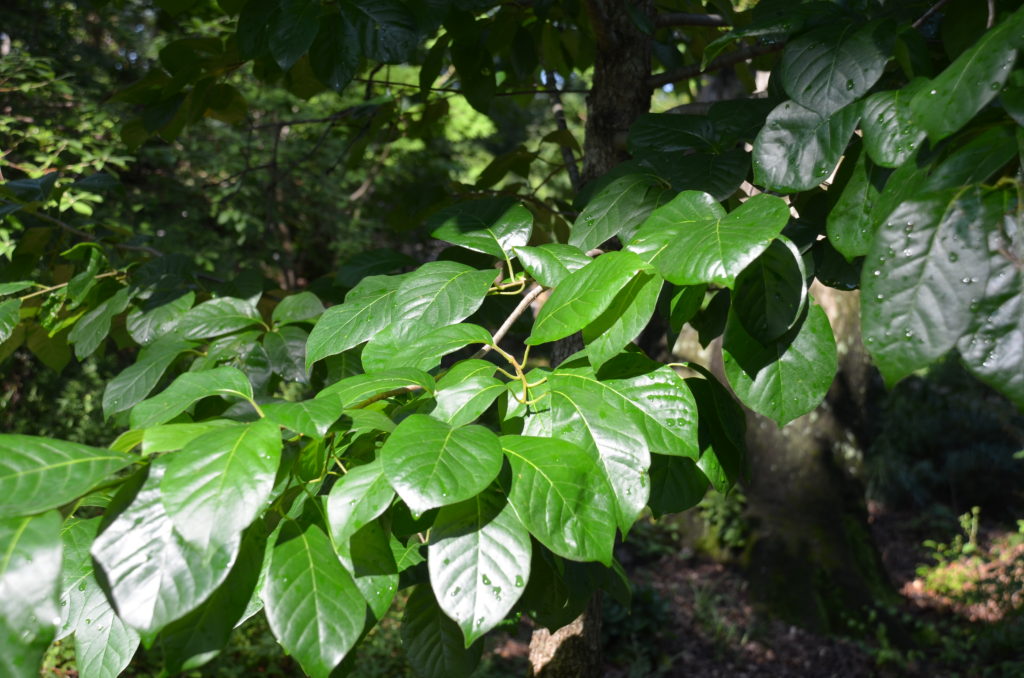Black gum (Nyssa sylvatica) or tupelo tree is a native to Eastern North America (USDA hardiness zones 3-9). It is native from the New England states southward into Florida and west to Eastern Texas. Seedlings of this wonderful woodland and landscape tree start off slowly, but will mature to heights of 50 to 60 feet and 20 to 25 feet in width. Because of its tap-rooted nature, it is best to purchase nursery grown trees six inches or less. Allow 2-3 years for the tree(s) to established. Afterwards, black gum trees grow as rapidly as a sugar maple and make an ideal yard shade tree.


The 3-6 inch high gloss dark green summer foliage. Fall leaf color is expressed early, often in early September and continues through mid- to late- October, a blend of yellow, orange, purple, and red shades, rarely the same one year to the next. The light gray bark on a young tree becomes deeply furrowed with distinctive square ridges as the tree ages.
Black gum has a mostly dioecious flowering habit, which means that a tree produces either mostly male flowers while another tree bears mostly female flowers. The small spring flowers are prolific but are mostly inconspicuous. Blooms draw numerous nectar hungry bees. Tupelo honey is highly prized.
In some years female trees may be loaded with berries, while mostly male trees bear only a few berries. The bluish-black fruits (berries) attract numerous birds and many four-legged critters. Deer are not a problem.
Disease and insect issues are minimal if the tree is sited properly. Leaf spot problems are best avoided by selecting resistant varieties (cultivars). Recommended cultivars are ‘Wildfire’ and Green Gable®. Black gum’s fire risk rating is low.
Black gum is an excellent ornamental shade tree and a street tree. The tree grows well in moist soils including sites prone to periodic flooding. Formerly rated as difficult to transplant, modern day nursery practices permit more production of black gums.

 Posted in
Posted in 
